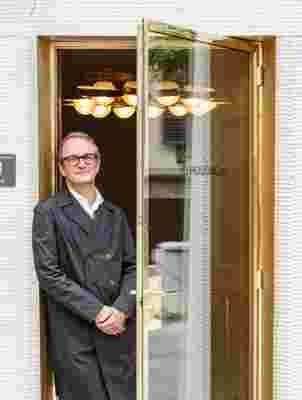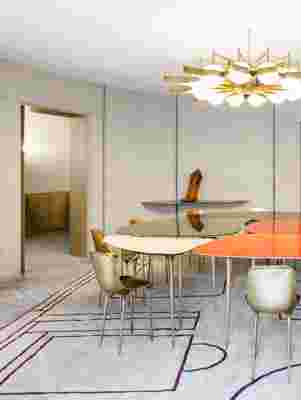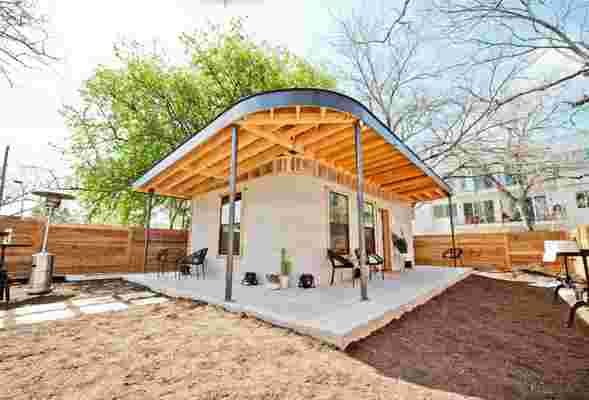For the past several years, talk of 3-D printing revolutionizing the way we build has been mostly just that—talk. But the promise of printing a habitable house, on demand, in virtually any location, is becoming a reality. Around the globe, teams of architects, engineers, and entrepreneurs have developed robotic arms capable of producing walls for a small home in as little as 24 hours, with essentially zero waste and for a fraction of traditional construction costs. Competing to develop the top technology, industry players are now engaged in a space race of sorts—literally so, in some cases, with NASA funding research for printing habitats beyond our planet.
Of more immediate, earthly interest was the recent unveiling of two of the first-ever homes to be printed on-site. At Austin’s South by Southwest festival this past March, the San Francisco–based nonprofit New Story presented a 350-square-foot prototype of the low-cost homes it hopes to build across the developing world. Just a month later, during Milan’s Design Week, architect Massimiliano Locatelli debuted a 1,100-square-foot residence of a decidedly more luxurious sort, with elegantly plastered interior walls, brass details, and stylish furnishings. These two projects—using similar technologies in which robotic arms extrude layers of a concrete mixture that harden into solid walls—represent opposing ends of the spectrum for this industry’s potential.

Architect Massimiliano Locatelli outside the 3-d-printed house he presented during April’s Salone del Mobile in Milan.

Locatelli decorated the house with contemporary and vintage furniture.
“There are over a billion people without adequate shelter,” says New Story cofounder Brett Hagler. “It’s a massive deficit, and traditional construction methods are not enough to make a dent. But 3-D printing promises significant decreases in cost and build time.” To date, New Story has completed close to 1,000 conventional houses in Bolivia, El Salvador, Mexico, and Haiti—where it is currently building a community with support from AD—with each home requiring around $7,000 and two weeks to finish. Using a 3-D printer developed with the company Icon, Hagler expects to reduce those numbers to $4,000 and just a couple of days. The charity’s first large-scale printed project will be 100 homes in El Salvador, slated for completion next year.
“We will be able to put a lot of creativity into the design based on a family’s current situation and their future dreams,” Hagler notes of the homes’ flexible layouts, which are determined by customizable CAD files. “We’re trying to have better aesthetics—something that’s too often ignored when it comes to the world’s poorest families.”

New Story’s 3-D-printed prototype for shelter in the developing world (newstorycharirg).
It’s precisely the aesthetics and creative potential that inspired Locatelli, cofounder of the firm CLS Architetti, to erect his 3-D-printed house in Piazza Cesare Beccaria. As he explains, the project was all about embracing the textures of 3-D-printed forms and “exploring the beauty of the new language.”
Realized in collaboration with concrete specialists Italcementi, the engineering firm Arup, and the Dutch mobile 3-D-printer maker CyBe Construction, the house took about a week to create, with production lasting roughly 48 hours. Consisting of four rounded volumes (living area, bedroom, kitchen, bath), all topped by a roof garden, “the shape was completely free compared to traditional architecture,” says Locatelli. “Go ahead, try to make a curved house with bricks or stone—it’s so complicated. With this you really can create new shapes.”
Locatelli says he has received numerous inquiries, including commissions for 100 homes near Washington, D.C., and a 10,000-square-foot house on Sardinia. And the owner of a Lake Como villa who had hired him to build a guesthouse switched gears after seeing the project in Milan. “He said, ‘I’m not going to build in stone anymore. I want the 3-D-printed house,’ ” recounts the architect, who is working with Arup on how to print multilevel structures—something that has never been done. “The relationship between architect and client is going to change so much,” says Locatelli. “Probably the architect is going to become a shrink, more or less, helping give shape to the client’s dreams.”
